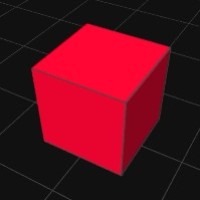- mySketch
xxxxxxxxxx// engineer: jWilliamDunn, 2024.1101/*When an annulus is split into several pieces along the radials, the resulting segments are commonly referred to as annular sectors. Each sector is formed by two radii extending from the center of the annulus to the inner and outer circles, creating a wedge-shaped piece of the annular region.(like a piece of pie with the point bitten off)quad() chosen over annulus() due to performance*/p5.disableFriendlyErrors = true;var angle=Math.PI/4, t=0, u=100;function setup() { createCanvas(windowWidth, windowHeight, WEBGL); pixelDensity(2); setAttributes('antialias', true); createEasyCam(); colorMode(HSB); perspective(PI/3, width/height, 1, 8000); document.oncontextmenu = () => false; strokeWeight(1);}function draw() { background(0,0,0); t+=0.0005; u+=0.01; noStroke(); let n=1; rotate(t); for(let i=0; i<240; i++) { //240 n=Math.floor(noise(t,i)*50); fill(240+n,100,70); if(mouseIsPressed) annulus(80,200+n, TAU*0.003,1); //200+50*n //540ms/60iter //rect(80,0, 200,2); //264ms/60iter //beginShape(); vertex(80,0); vertex(80+200,0); vertex(80+200,4); vertex(80,2); endShape(CLOSE);//539ms/60iter //triangle(80,0, 280,0, 280,4); //262ms/60iter else quad(80,0, 200+n,0, 200+n,4, 80,1.5); //266ms/60iter 640ms/240iter //anomaly: when noise() is added back into the loop, the quad() perf suffers which does not happen with annulus() rotate(TAU/240); }}// increasing loop from 60 to 240 proportionally increases script time from 5% to 15%// jWilliamDunn 20200803 handle fill and stroke separatelyfunction annulus(inner, outer, angle, segs) { if(segs===undefined)segs=20; //if(segs<5)segs=5; if(this._renderer._doStroke){ push(); noFill(); beginShape(); for(let i=0; i<=segs; i++) vertex(outer*Math.cos(angle*i/segs), outer*Math.sin(angle*i/segs)); for(let i=segs; i>=0; i--) vertex(inner*Math.cos(angle*i/segs), inner*Math.sin(angle*i/segs)); endShape(CLOSE); pop(); } if(this._renderer._doFill){ push(); noStroke(); beginShape(TRIANGLE_STRIP); for(let i=0; i<=segs; i++){ vertex(outer*Math.cos(angle*i/segs), outer*Math.sin(angle*i/segs)); vertex(inner*Math.cos(angle*i/segs), inner*Math.sin(angle*i/segs)); } endShape(); pop(); }}Select mode or a template
Centers sketch and matches the background color.
Prevents infinite loops that may freeze the sketch.
- Simple 3D camera control. Example
This will be the default layout for your sketches
Easy on the eyes
It will show up when there is an error or print() in code
Potential warnings will be displayed as you type
Closes parenthesis-like characters automatically as you type
Controls
Play
Ctrl+Enter
Code
Ctrl+Shift+Enter
Save
Ctrl+S
Interface
Fullscreen
Ctrl+Alt+F
Switch Layout
Ctrl+Alt+L
Settings
Ctrl+Alt+.
Editor
Tidy Code
Ctrl+B
Multiple Cursors
Ctrl+Click
Duplicate Line/Selection
Ctrl+Shift+D
Move Line
Alt+↑/↓
Select Multiple
Ctrl+D
Find in Code
Ctrl+F
Find Next
Ctrl+G
Find Previous
Ctrl+Shift+G


